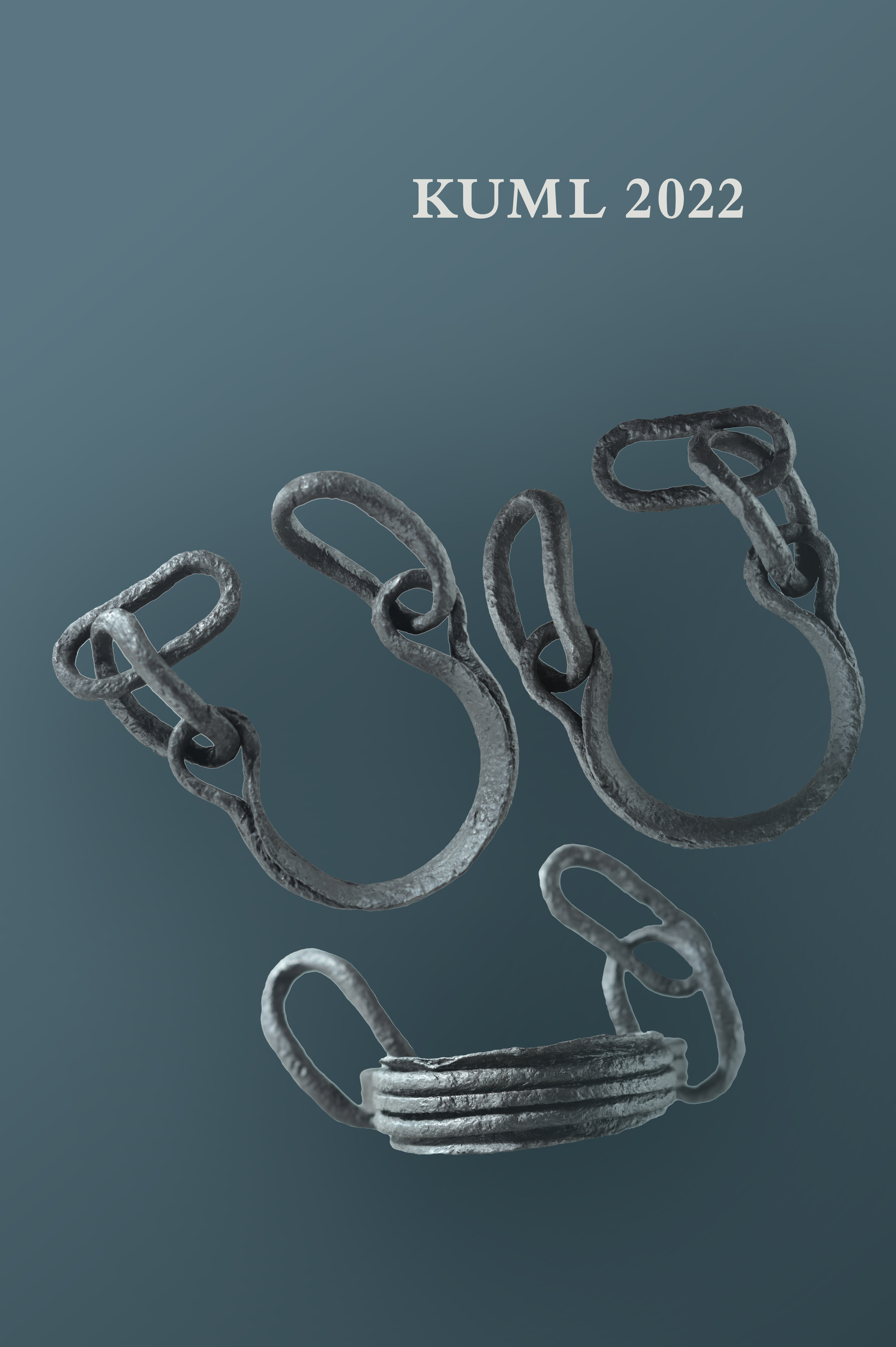Verdslige genstande i et sakralt landskab
DOI:
https://doi.org/10.7146/kuml.v71i71.142073Abstract
Secular artefacts in a sacral landscape
Textile production at a Pre-Roman/Early Roman Iron Age place of assembly
The locality of Stavsager Høj, situated north of the village of Fæsted in southern Jutland, was discovered during metal detector surveys in 2018. In addition to numerous metal finds and magnificent artefacts, the locality also offered an insight to more mundane materials: spindle whorls made from reused potsherds. These recycled artefacts are the primary focus of this article, which illuminates textile production around a pre-Christian assembly site. Four vase-shaped bronze spindle whorls are also presented and analysed together with the reused potsherds to examine the character of the local textile craft. Overall, they testify to a versatile production of textiles within the multi-phased settlement. The debate surrounding repurposed potsherds and their use as spindle whorls is also discussed. A further perspective on textile tools is provided by two tangible textile remains: a textile imprint on a fragment of pottery and a piece of preserved textile on a bronze chape. These support the diverse and broad production span demonstrated by the tools and provide an insight to a textile craft that included the production of both fine, lightweight cloth and coarser fabrics. Though the number of textile tools found at Stavsager Høj is rather modest, they do illuminate the textile craft in a landscape of an elitist and sacral character.
Published
Versions
- 2024-06-18 (2)
- 2023-12-04 (1)
How to Cite
Issue
Section
License
Fra og med årgang 2022 er artikler udgivet i Kuml med en licens fra Creative Commons (CC BY-NC-SA 4.0).
Alle tidligere årgange af tidsskriftet er ikke udgivet med en licens fra Creative Commons.


